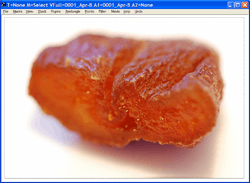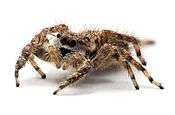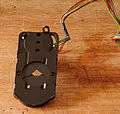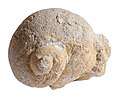CombineZ
CombineZ is Free software image processing software package for creating extended depth of field images. It runs on Microsoft Windows. The current release is CombineZP (CombineZ-Pyramid), successor to CombineZM (CombineZ-Movie) which was based on CombineZ5 (designed for older versions of Windows and is no longer maintained).[1]
 | |
 CombineZM running on Windows XP | |
| Developer(s) | Alan Hadley |
|---|---|
| Stable release | CombineZP
/ June 6, 2010 |
| Operating system | Windows |
| Type | Digital image processing |
| License | GPL |
| Website | www |
CombineZ processes a stack of images (or "Frames") and is most frequently used to blend the focused areas of several partially focused digital photographs in order to create a composite image with an extended depth of field (DOF), created from the in-focus areas of each image.
Other uses
CombineZ has many image manipulation functions that can be used in modifying images (frames) or sets of sequential images (stacks). It can take videos and split them into individual frames which are then manipulated as a stack. For instance, since version CombineZM one can take a movie through a microscope as you wind the focus up or down, and use it for focus stacking. Alternatively, one can convert a sequence of static frames into a movie (including generating intermediate transitional frames for smoothness) or a pseudo-3D 'rocker' image stack animation.
Limitations
- Does not support 16 bit images
- Images must be in height order (closest to furthest, but can be flipped within the application)
- Supports a limited number of image and video formats
- Only runs on Microsoft Windows
Gallery
 Macro image created with CombineZM. All parts of the spider are in focus.
Macro image created with CombineZM. All parts of the spider are in focus. 13 images were combined to create this image of a jumping spider.
13 images were combined to create this image of a jumping spider.
Some images created with CombineZP and taken with a Nikon Coolpix P7000:
 Electronic components
Electronic components Electronic components
Electronic components Bark with scolytinae sp. galleries
Bark with scolytinae sp. galleries Bark with scolytinae sp. galleries
Bark with scolytinae sp. galleries
Some images created with CombineZM/CombineZP and taken with a Nikon D300 with a macro lens:
 A diaphragm from an old videocamera
A diaphragm from an old videocamera A sensor from an old videocamera
A sensor from an old videocamera Fossil
Fossil
 Electric device
Electric device Asteraceae sp. flower
Asteraceae sp. flower Asteraceae sp. flower
Asteraceae sp. flower
References
- "Archived copy". Archived from the original on 2009-01-23. Retrieved 2009-01-23.CS1 maint: archived copy as title (link)
External links
| Wikimedia Commons has media related to CombineZ family. |
- Official website
- "Getting started guide for CombineZ5". Archived from the original on July 24, 2011. Retrieved May 5, 2007.
- Easy to read explanation of how CombineZM works
- Page with source code archives